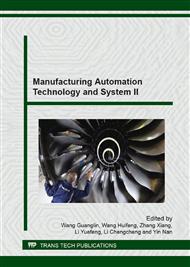p.627
p.633
p.641
p.649
p.655
p.663
p.669
p.675
p.681
The Isogeometric Shape Optimization Method Based on Finite Cell Method
Abstract:
Isogeometric analysis (IGA) method uses the same mathematical model in geometric design and engineering analysis, and is the most potential method to realize high accuracy and integrated optimization design. Finite Cell Method (FCM) introduces high order finite element method into fictitious domain method, and it has great advantages of complex boundary representation and high efficient convergence. In order to break through IGA’s limit on geomerty’s topology, IGA and FCM are combined together in this research. Function Heasivide and Dirac are used to approximate the computational domain and its first order derivative, then the stiffness matrix on the fictitious domain are calculated and the displacement in the shape with complex boundary is solved by IGA method. One order and two order implicit curves are used to the outer boundary representation of elastic optimization problem, and their coefficients are taken as design variable. The sensitivity formulas are deduced. MMA method is used to implement the IGA shape optimization based on FCM. The examples show that our method is efficient and the result is satisfied.
Info:
Periodical:
Pages:
655-662
Citation:
Online since:
August 2014
Authors:
Price:
Сopyright:
© 2014 Trans Tech Publications Ltd. All Rights Reserved
Share:
Citation:


